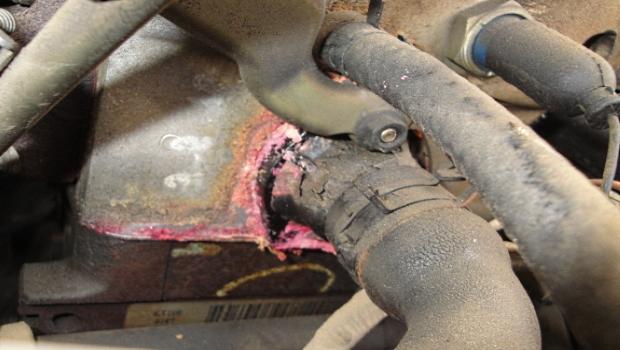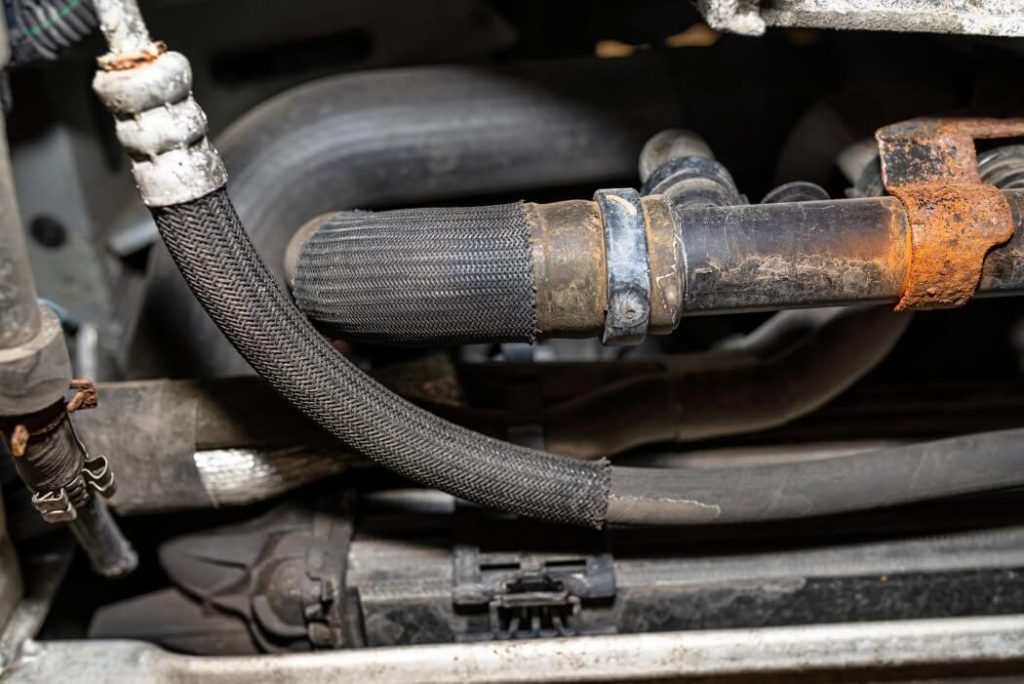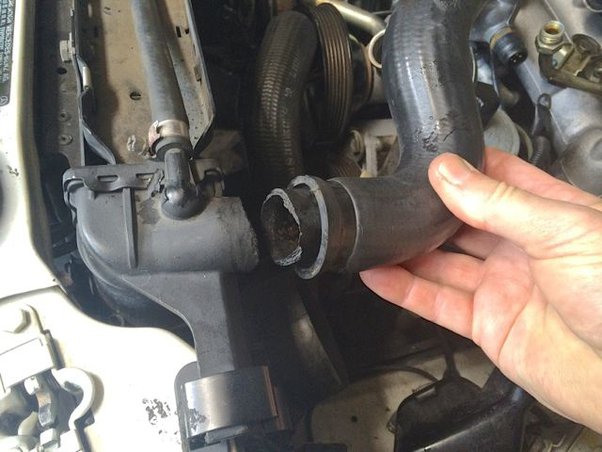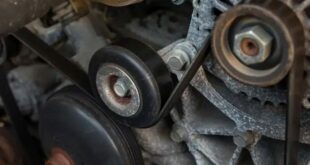In the world of auto repair, changing is one radiator hose a basic but essential skill. Our article will walk you through the process and answer important questions. Can you patch or repair a coolant hose? In an emergency, a damaged one can be used Cooling water hose with home remedies like self-adhesive silicone tape makeshift be repaired. The band is water-resistant and can withstand high temperatures. However, this is only a temporary solution and the hose should be changed as soon as possible. At the Changing the coolant hose in the workshop The entire cooling system is checked to locate the source of the damage. This could be a radiator damaged by stone chips or a leaky connection.
Change the car radiator hose!
After identifying the damaged area and allowing the engine to cool down, the coolant can be drained and the defective hose removed. Either the Locking clip solved or the hose clamp removed. For the change there will be a new one Formed hose needed that fits the vehicle exactly. The Costs for a new coolant hose start at around 15 EUR, but can vary depending on type and model. Additionally, the cost of the coolant and labor costs in the workshop must be taken into account. Features of a coolant hose: Coolant hoses are available in various shapes and diameters and are often made of hard rubber or hard plastic.
Symptoms of a defective coolant hose
The hoses must withstand high temperatures and be resistant to operating fluids. Symptoms of a defective coolant hose include frequent coolant refills, visible puddles under the vehicle, water vapor in the engine compartment, and a sweet smell from the antifreeze. Increased coolant temperature and white smoke coming from the hood are serious warning signs. Why do coolant hoses leak? Material fatigue, vibrations, mechanical damage, incorrect assembly or marten bites can lead to damage. Blockages in the cooling system can also lead to leaks.
What are the tasks of the hose?
The Task of the cooling water hose is to transport the coolant between the various components of the cooling system, such as the water pump, thermostat and radiator. The integrity of each hose is essential to effective engine cooling. Changing one radiator hose is not a difficult task, but requires care and the right approach. With the right tools and a little patience, even laypeople can carry out this repair successfully, saving costs and improving understanding of your own vehicle.
Information about changing the car radiator hose:
- Repair of cooling water hoses: Temporary solutions like Adhesive tape or silicone tape; In the long term the hose will need to be replaced.
- Self-adhesive silicone tape: Ideal for emergencies, self-welding, water resistant, withstands cooling water temperatures.
- Change in the workshop: Checking the entire cooling system, identifying the damaged area, replacing the defective hose.
- Drain coolant: Necessary after the engine has cooled down; Use a collecting pan for escaping coolant.
- Hose attachment: Either Locking clip or hose clamp; Tools depending on vehicle type.
- replacement hose: More specific Formed hose required, no generic hose such as garden hose is suitable.
- Costs for a new coolant hose: From around 15 EUR, higher prices for special models; additional costs for coolant and labor costs in the workshop.
- Properties of cooling water hoses: Various shapes and diameters, mostly made of hard rubber or hard plastic, temperature resistance up to 100 °C, resistance to operating fluids.
- Symptoms of a broken hose: Frequent refilling of coolant, puddles under the car, water vapor in the engine compartment, sweet smell, increased coolant temperature.
- Causes of leaks: Material fatigue, vibrations, mechanical damage, marten bites, incorrect assembly, contamination in the cooling system.
- Importance of hose connections: Central for the circulation of coolant between the water pump, thermostat and radiator.
The following note is essential: For safety reasons, tuningblog recommends all repair, inspection and maintenance work exclusively to be carried out in a specialist workshop! Although our information is summarized to the best of our knowledge and belief, we cannot assume any liability for the content. All information is therefore "without guarantee".
That wasn't it yet!
In our Auto Repair Category you will find advice and instructions on common vehicle defects, repairs and the installation of accessories/tuning parts.
thematically relevant posts
|
How do I get rid of deep scratches on my car? Our short guide! |
 tuningblog.eu Your magazine about tuning the car
tuningblog.eu Your magazine about tuning the car




